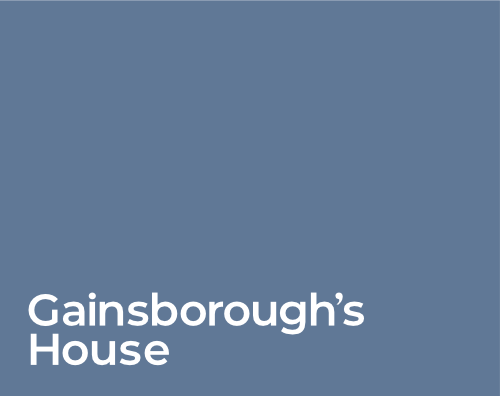Books and manuscripts
Books and Manuscripts
The Gainsborough’s House collection includes a significant collection of books and manuscripts dating from Gainsborough’s lifetime.
Original letters written by Gainsborough to friends and patrons not only reveal a great deal about his interactions and professional affairs, but also provide crucial information about his character and temperament. We also learn much about his art: his methods and techniques; his materials; and his concern with how his pictures were displayed.
The collection also contains other documents relating to Gainsborough’s profession, including a handwritten receipt by the artist for the sum of 15 guineas for a half-length portrait. Written just prior to his move from Suffolk to Bath in the late 1750s, it is a good example of Gainsborough’s growing reputation and ambition as an artist. It is the only evidence of his fees for a half-length portrait during this time.
Newspapers dating from the period immediately following Gainsborough’s death contain obituaries and articles which have long been seen as crucial sources of information relating to the artist’s life and contemporary reputation. Likewise, a 1788 copy of Philip Thicknesse’s (1719-1792) A Sketch of the Life and Paintings of Thomas Gainsborough represents the first biography of the artist.
An extensive archive of documents relating to Gainsborough’s House charts the history of the museum and its exhibitions. There is also a large quantity of material relating to Sudbury and the local area.
An impressive assortment of eighteenth century books put Gainsborough’s life and works in a broader context.
These include bindings by Gainsborough’s close friend, Joshua Kirby (1716-1774), such as his Perspective Made Easy (1754) and Suffolk Traveller (1764). The former of these works includes the first known etching by Thomas Gainsborough.
Various volumes of ‘Fables’ and other period texts in the collection contain engraved illustrations by influential figures in Thomas Gainsborough’s early artistic development, including Francis Hayman (1708-1776) and Hubert-François Gravelot (1699-1773).
A complete set of William Gilpin’s (1724-1804) Essays on Picturesque Beauty, dating from the late eighteenth century, provides a crucial theoretical counterpoint to Gainsborough’s experiments in landscape.
Other significant texts include: William Hogarth’s (1697-1764) Analysis of Beauty (1753); The Universal Penman (1743), by writing master and engraver George Bickham (1684-1758); a presentation copy of Joshua Reynolds’s (1723-1792) Discourses On Art, inscribed by the author to the Earl of Dartmouth; and various exhibition catalogues from the late eighteenth century.
Latest News
About Gainsborough’s House
Gainsborough’s House Society , Charity No. 1170048 and Company Limited by Guarantee No. 10413978


